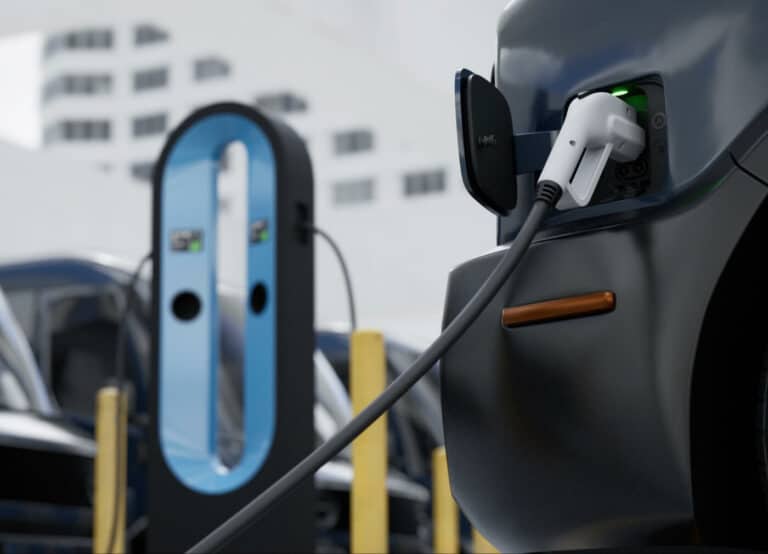Using an expense tracking app like MileIQ or QuickBooks, you can keep track of your fuel expenses by recording the odometer readings and cost of each fill-up. You can then review your fuel spending at any time in order to stay on budget.
Automating Fuel Spending with Mobile Apps
The increasing prevalence of mobile apps for tracking and monitoring fleet fuel expenses can be an effective way to increase efficiency and save time. Automating fuel spending with mobile apps eliminates the need for manual data entry, which can be cumbersome when dealing with a high number of transactions. Mobile apps can also provide a convenient way to quickly review fuel transactions and gain insights into trends by creating reports, charts, and graphs.
Furthermore, mobile apps offer the added benefit of allowing drivers to collect data on their phones, making it easier for management to review and approve expenses in real time. With built-in features such as convenient notifications about upcoming refueling needs, businesses can keep track of how much and when their vehicles are being fueled, ensuring that employees are using the fleet efficiently.
On the flip side, there is an initial investment associated with implementing an automated system for tracking fuel costs. Businesses must first spend time setting up the system, which includes installing the app, entering necessary expense information into it, and ensuring that all users are correctly registered. Additionally, as with most automation endeavors, there is always potential risk, such as security threats and data loss.
In conclusion, while there are potential risks associated with automating fuel spending with mobile apps, the time-saving and efficiency benefits outweigh the negatives. Companies should consider investing in a mobile application designed to track fuel expenses in order to streamline their fleet operations. As you move forward into your journey exploring how best to monitor and track your fuel expenses, consider taking a look at tracking your use through additional mobile applications as well.
Monitoring and Tracking Fuel Expenses Using Logistics Software
Tracking fuel expenses with logistics software can be an effective way for professionals to monitor and track their fuel costs. Logistics software solutions provide up-to-date information on every stage of the distribution process, from orders placed to payments received. This includes crucial data such as fuel types, usage rates, and pricing. Companies benefit from having accurate records of how and when fuel is used, allowing them to properly plan and budget accordingly.
Using logistics software gives companies the ability to quickly identify discrepancies between predicted and actual fuel costs. By carefully evaluating data such as vehicle usage, route planning, delivery schedules, traffic patterns, weather conditions and other variables which affect costs; clear insights can be revealed that allow business owners to save money in areas that have high fuel expenses. The analytical capabilities of this technology can proactively alert businesses to potential issues that may lead to increased spending on fuel in the future, enabling businesses to make more informed decisions about their operation costs.
The advantages of using logistics software for tracking and monitoring fuel expenses include its cost-effectiveness, speediness and accuracy of data. Some also argue that it reduces paperwork and manual entry errors. However, opponents suggest that there are certain risks associated with implementing an electronic system since it requires a greater level of diligence on the part of the user; mistakes may occur due to inaccurate data entry, misunderstandings of how the software works, and a lack of quality control over the results produced.
Overall, tracking your fuel expenses with mobile apps or logistics software is an effective way to keep track of spending while leveraging industry-standard technology. Not only do they provide up-to-the-minute access to current spending levels but they also offer analytical insights which can help businesses become more efficient in their operations by identifying wasteful spending sources and implementing more sophisticated cost reduction strategies. As useful as analytics are, accessing the underlying data used in producing them is essential for the most knowledgeable decision-making process. To learn more about accessing data on spending using logistics software, read on.
Accessing Data on Spending Using Logistics Software
Many businesses today rely on logistics software to access detailed data about their fuel expenses. Logistics software can provide an array of information related to fuel expenses, giving users the ability to track and analyze this data for business intelligence. This type of software provides the ability to view fuel expenditure by vehicle, department, supplier and more, meaning it’s easier than ever for businesses to identify patterns in fuel usage that can lead to efficiency opportunities. Accurate tracking of fuel expenses allows businesses to make more informed decisions on savings and budgeting initiatives.
On the other hand, while the use of logistics software simplifies the process of monitoring and analyzing fuel expenses, there are still limitations as far as accuracy is concerned. Many systems do not integrate with existing accounting software and thus require manual input or report downloads. Furthermore, third-party suppliers’ costs must be manually added into a system if they have not already been uploaded by suppliers. Depending on these factors, the accuracy of resulting reports may suffer.
Overall, the use of logistics software makes accessing data on spending easier, but users must understand its limitations when trying to gain an accurate understanding of their organization’s spending. With good management practices in place, such as utilizing trusted sources for purchases and data entry, businesses should be able to gain meaningful insights into their spending habits from using this technology. Moving onto another imperative element for tracking expense progress—accounting procedures—will ensure full visibility into financials.
Tracking Fuel Expenses with Accounts & Accounting
For companies with an extensive fleet of vehicles, tracking fuel expenses with accounting software can be a helpful way to monitor spending. By keeping up-to-date records of fuel purchases and other related expenses, companies can often get better rates from suppliers due to increased visibility. Additionally, tracking fuel expenses through specialized software makes it easier to allocate costs accurately based on individual vehicles and drivers, eliminating discrepancies between physical and digital records.
However, relying on accounts and accounting software alone is not foolproof. Detailed logistic tracking software can provide more complete coverage than accounts alone, as the data inputted in many accounting systems is not always comprehensive or regularly updated. Additionally, comprehensive logistic systems are designed specifically for logging fuel consumption, which often translates into more accurate tracking than entering data into an accounting system manually.
Overall, while tracking fuel expenses through accounting software can provide valuable information that helps companies form a bigger picture of their spending habits, combining separate systems like logistics tracking with traditional accounts is ideal for ensuring accuracy and detail when recording data. Making use of multiple platforms allows for the highest accuracy possible in capturing data about fuel expenditure, creating improved opportunities for cost-saving measures in the long run. The next step in monitoring and tracking fuel expenses is to record all expenses and factor in any additional factors, like taxes or service costs, for a comprehensive analysis.
Recording Fuel Spent & Cost Analysis
It is essential for companies to record fuel spent and cost analysis to better evaluate their use of resources and stay on budget. Digital recording of data is recommended, as it is automated and offers fewer mistakes than manual notes with pen and paper. Reviewing past data can provide businesses with critical insights into what strategies work best for efficient resource use.
Improving Fuel Efficiency Through Tracking
By tracking fuel expenses, businesses can gain greater insight into their day-to-day operations and the decisions that impact their bottom line. This knowledge enables them to make smarter decisions that can lead to reduced fuel costs and improved fuel efficiency. For example, they may be able to identify wasteful spending, such as excessive idling time, or breaks in standard operating procedures that can be corrected or eliminated.
For businesses with a fleet of vehicles, tracking fuel expenses allows them to monitor driver behavior, route optimization, and other factors that can increase efficiency or have an impact on fuel usage. For example, they may identify areas where drivers are slowing down or taking unnecessary turns, wasting precious fuel in the process.
On the other hand, tracking fuel expenses can also provide a wealth of data that can inform potential process improvements. By capturing information on vehicle performance, drivers’ routes, and speed, managers are better equipped to reorganize routes for efficiency, optimize vehicle loads, and implement other changes that could improve overall fuel efficiency without compromising productivity.
These types of insights can then inform operational processes in the future to ensure more efficient use of fuel and fewer wasted resources. The result is not only a more financially sustainable operation but also one that takes an active role in safeguarding the environment by maintaining responsible levels of emissions.
Overall, tracking fuel expenses helps businesses not only reduce costs but also maximize resource utilization and become more environmentally conscious. With the right tools and strategy in place, organizations can leverage data-driven insights to optimize their operations, improve efficiency, and gain greater control over their fuel consumption costs.











